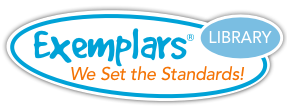Grade 1 - Geometry Unit
Standards covered:
- 1.6 Geometry and measurement
-
1.6A
Classify and sort regular and irregular two-dimensional shapes based on attributes using informal geometric language.
-
1.6B
Distinguish between attributes that define a two-dimensional or three-dimensional figure and attributes that do not define the shape.
-
1.6C
Create two-dimensional figures, including circles, triangles, rectangles, and squares, as special rectangles, rhombuses, and hexagons.
-
1.6D
Identify two-dimensional shapes, including circles, triangles, rectangles, and squares, as special rectangles, rhombuses, and hexagons and describe their attributes using formal geometric language.
-
1.6F
Compose two-dimensional shapes by joining two, three, or four figures to produce a target shape in more than one way if possible.
The Geometry Unit involves analyzing attributes of two-dimensional shapes in order to answer questions such as:
- What makes these shapes triangles?
- Why is this shape a rectangle and not a triangle?
- When I turn this shape, why is it still a square?
- This shape is big and yellow. This shape is small and blue. Why are they both hexagons?
Summative Assessment Task
Students determine the three shapes Sarah draws on her paper so that one shape has three sides and two shapes have four sides.
Instructional Tasks/Formative Assessments
Students group attribute blocks without using color or size.
Students determine what three different shapes Leah can make on her paper so that each shape has four corners.
Students group pattern blocks without using color.
Students design two different quilt squares that Granny can use to make a quilt.
Using pattern blocks, students determine two ways to make the same shape as the yellow pattern block.
Students show four different shapes that can be made so that each shape has more than three sides.

The N/A classification refers to TEKS Standards that cannot be assessed through problem solving.
For this reason, tasks have not been included for these particular standards.
K.7A K.7B K.9B K.9C K.9D